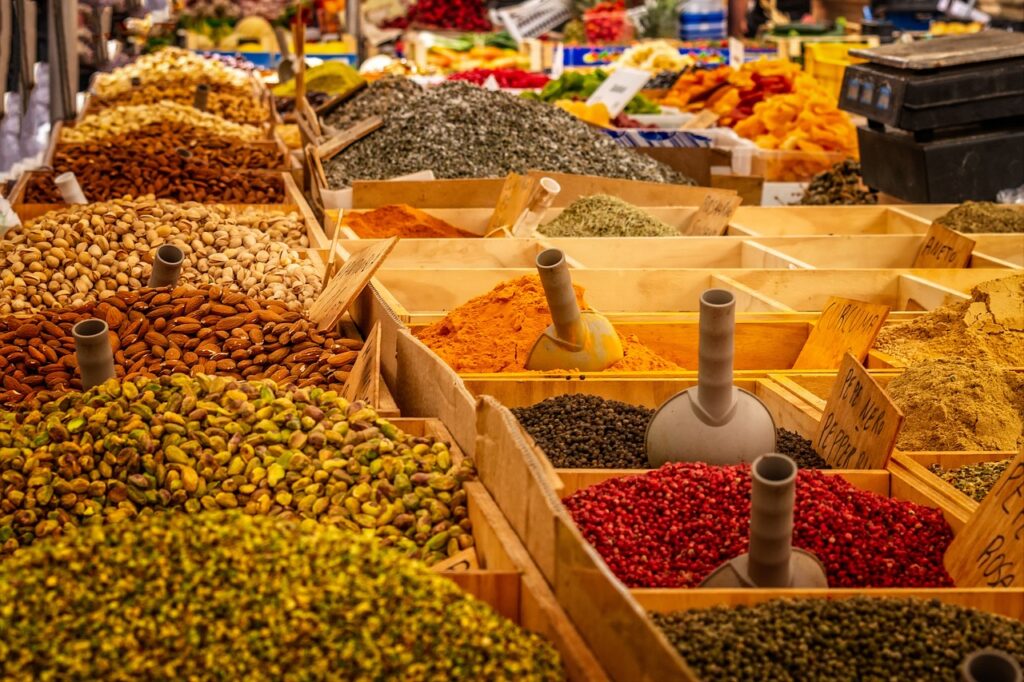
A mere touch of this and a hint of that possesses the potential to utterly metamorphose the flavor profile of an entire culinary creation. Through the incorporation of herbs and spices, even a modest quantity holds the ability to yield substantial results. Adept culinary artisans comprehend the art of skillfully harmonizing and enhancing a dish by deftly amalgamating the precise assortment of herbs and spices, yet this proficiency demands years of dedicated refinement and the navigation of countless experiments. The subsequent discourse is tailored to individuals in pursuit of their culinary voyage, be they home cooks or burgeoning chefs, seeking to initiate their exploration into the realm of herbs and spices, and venturing into the realm of ubiquitous spice blends. The market boasts an abundance of diverse spices and harmonious spice blends, with research attesting to their escalating popularity in recent times. Thus, the conundrum arises: How does one navigate the selection of essential spices for their domestic pantry?
What are Spices?
What exactly do spices entail? Spices encompass the enchanting essences derived from seeds, fruits, bark, rhizomes, and various other botanical components. For centuries, they have been harnessed to infuse food with flavor, extend its preservation, and serve as remedies, dyes, and perfumes. The very term “spice” originates from the Latin word “species,” denoting merchandise or commodities, underscoring their historical significance as valuable trade items.
Typically available in dried form, spices should not be mistaken as perpetually enduring. Over time, their vibrant flavors can fade, especially when exposed to light and air. Hence, it’s vital to store them meticulously, ensuring their aromatic attributes endure for as long as possible.
How Do You Store Spices?
Place the spices you employ regularly within opaque glass jars or tin containers, sheltered in a dim cupboard. For less frequently utilized spices, opt for airtight receptacles and store them in the freezer. (Remember to allow frozen spices to reach room temperature before unsealing to prevent moisture buildup.) Adorn your spices with labels indicating their acquisition dates, and conduct occasional olfactory assessments to ensure their enduring potency.
Notably, ground spices tend to undergo oxidation more swiftly than whole spices, primarily due to their expansive surface exposure. Consequently, their flavor dissipates within a few months, whereas whole spices retain their essence for up to a year. Given the minute quantities in which we employ them, spices ought to be reservoirs of concentrated flavor.
A Must-Have Collection of 10 Essential Spices for Every Pantry
1. Black Pepper
As a contrast to the ever-present salt, black pepper stands as a flavorful spice that enhances the taste of most savory dishes when used in moderation. Specific recipes, like lemon-pepper pasta or fried chicken, can gain a healthier touch with a judicious sprinkle of this spice.
2. Rosemary
Essential for French and Mediterranean cuisine, dried rosemary offers an earthy, woody, and pine-like aroma. While it may take time to develop a taste for rosemary, its unique flavor undoubtedly sets your dishes apart, adding a distinctiveness that stands out among others.
3. Cinnamon
While cinnamon is often recognized for its role in sweet dishes or as a topping for morning toast, this spice can also be a superb complement to select savory recipes. Employ it sparingly in dishes like chili, tomato sauces, and similar preparations.
4. Thyme
Thyme boasts a gentle blend of woodland notes, lemony undertones, and mildness. While frequently employed to enhance the flavor of meats and stews, this herb can also inject a burst of freshness into vegetables.
5. Oregano
Few things exude the essence of Italy as effectively as oregano does. A small amount of dried oregano can infuse your tomato sauce with an unmistakable Italian flair. Additionally, it serves as a robust enhancement for Greek and Mexican culinary creations.
6. Garlic Powder
Whether fresh garlic is your go-to or not, keeping garlic powder on hand can offer advantages. It provides a convenient means to swiftly introduce garlic flavor to a dish or to incorporate it into your personal spice blends.
7. Cumin
Possessing a smoky and earthy profile, cumin’s taste is a versatile delight. This flavor harmonizes exceptionally well with a range of ethnic cuisines, spanning Indian, African, and South American dishes. Even a subtle hint of cumin can inject spice and zest into unexpected creations such as eggs or grilled meats.
8. Cayenne Pepper
Yet another variation of pepper, cayenne pepper brings an unmistakable kick. It serves as an excellent means to introduce fiery heat to any culinary creation. Whether crafting your renowned chili or preparing buffalo wings, cayenne pepper empowers you to achieve the desired level of spiciness.
9. Nutmeg
Nutmeg exhibits its versatility in both sugary and savory preparations. An indispensable ingredient for bechamel sauces and various cheesy concoctions, its utilization is particularly prominent in sweet indulgences that harmonize with cinnamon.
10. Paprika
Though milder in comparison to other pepper-infused spices, paprika imparts a comforting warmth and earthy essence to dishes. Numerous variations of paprika exist, each possessing unique qualities such as smokiness or varying levels of spiciness.
While these ten spices are essential additions to your pantry, keep in mind that this list is just the initial step. Gradually expanding your spice repertoire and incorporating additional flavors will allow you to elevate the taste and character of all your culinary creations without hesitation.
For more information email us at hello@jilisheafrica.com